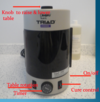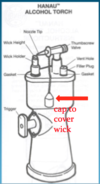Edentulous Flashcards
dental prosthesis
artificial replacement of one or more teeth and/or associated structures
removable partial denture
dental prosthesis that is patient removable and supported by teeth and soft tissue or teeth alone
edentulous
having no teeth, toothless, complete loss of natural teeth: lower self image decreased quality of life reduced daily function
RPD treatment obj
restore full arch form and fxn provide a prosthesis that is comfortable, esthetically pleasing, functional and does not interfere with the patient’s speech
partially edentulous
dental arch in which one or more but not all of the natural teeth are missing. lower self image decreased quality of life reduce daily fxn
study casts
absolute necessity in considering any prothesis: accurate reproduction of the teeth and adjacent tissue
ideal treatment plan
the best, most preferred type of treatment for each of the patient’s problems. may not take into account patient modifiers or the patient’s treatment objectives
modified treatment plan
balanced w/ patient’s treatment objectives w/ those treatment objectives of the clinician need to explain the pros of the ideal and the cons of the less than ideal plan - this is necessary in order to obtain true informed consent from the patient overall need to convey: practical for this patient
abutment teeth
any tooth or dental implant that supports and/or retains a dental prosthesis
abutment teeth - “double duty”
function and maintain arch integrity support the removable partial denture
kennedy classification
allowed visualization of the type of partially edentulous arch being considered permitted differentiation between tooth-supported and tooth-tissue supported partial dentures serve as a guide to the type of design to be used universally accepted
kennedy classification I
bilateral edentulous areas located posterior to natural teeth

kennedy classification II
a unilateral edentulous area located posterior to remaining natural teeth

kennedy classification III
a unilateral edentulous area w/ natural teeth remaining both anterior and posterior to it

kennedy classification IV
a single, but bilateral (crossing the midline), edentulous area located anterior to the remaining natural teeth (tooth borne)

Rule 1 for applying kennedy’s classification
classification should follow not precede any extractions of teeth that might alter the original classification
Rule 2 for applying kennedy’s classification
if a third molar is missing and not to be replaced, it is not considered in the classification
Rule 3 for applying kennedy’s classification
if a third molar is present and is to be used as an abutment, it is considered in the classification
Rule 4 for applying Kennedy’s classification
if a second molar is missing, and is not to be replaced, it is not considered in the classification
Rule 5
the most posterior edentulous area (or areas) always determines the classification
Rule 6
edentulous areas other than those determining the classification are referred to as modifications and are designated by their number
Rule 7
the extent of the modification is not considered only the number of additional edentulous areas
Rule 8
there can be no modification areas in Class IV arches
Class II, Modifications 1









